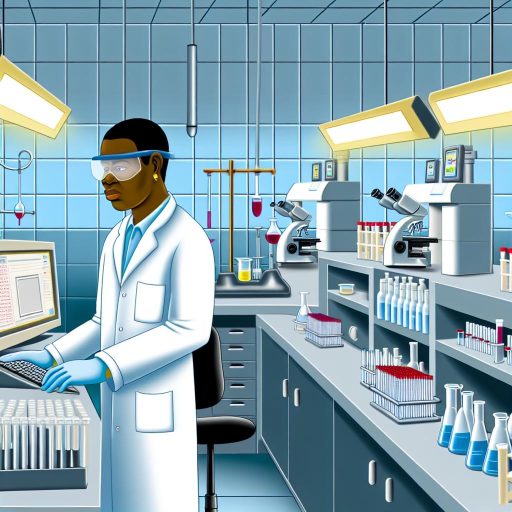Introduction:
Understanding the difference between applied math and statistics is crucial for anyone working in the field of data analysis.
While both disciplines deal with numbers and data, they have distinct methodologies and applications.
Applied Math:
Applied math involves using mathematical principles to solve real-world problems.
It focuses on deriving mathematical models and algorithms to address specific issues in various fields such as engineering, physics, and computer science.
Statistics:
In contrast, statistics is the study of collecting, analyzing, interpreting, and presenting data.
It aims to provide insights, patterns, and trends from data sets, helping decision-makers make informed choices based on probability and uncertainty.
Key Differences:
- Applied math is more theoretical, focusing on developing mathematical tools for problem-solving.
- Statistics, on the other hand, is more applied, dealing with data collection and analysis techniques.
- Applied math is often used in predictive modeling and optimization, while statistics is crucial for hypothesis testing and drawing conclusions from data.
Importance of Understanding the Difference:
By recognizing the distinctions between applied math and statistics, professionals can choose the right tools and techniques based on the specific requirements of their projects.
It helps in enhancing the efficiency and accuracy of data analysis processes and ultimately leads to better decision-making and problem-solving.
Definition of Applied Math:
Applied math is the use of mathematical principles to solve practical problems in various fields.
Explanation of what applied math is:
Applied math involves the application of mathematical methods to tackle real-world challenges and make informed decisions.
Examples of real-world applications of applied math:
- Engineering: Applied math is used to design structures, analyze systems, and optimize processes.
- Finance: Mathematical models are applied to forecast trends, manage risks, and make investment decisions.
- Physics: Applied math is crucial in modeling physical phenomena, such as wave propagation and quantum mechanics.
- Computer Science: Algorithms and numerical methods derived from applied math are essential for programming and data analysis.
- Epidemiology: Mathematical models help in understanding disease spread, vaccination strategies, and public health interventions.
Applied math plays a crucial role in various disciplines, ensuring efficient problem-solving and decision-making processes.
Definition of Statistics:
Statistics involves methods for collecting, classifying, summarizing, presenting, analyzing, and interpreting numerical data.
Explanation of what statistics is:
In simple terms, statistics is all about understanding data and making informed decisions based on that data.
It helps in identifying trends, making predictions, and drawing conclusions from the data that is available.
Statisticians use mathematical and analytical techniques to analyze data and draw meaningful insights from it.
Importance of statistics in various fields:
-
Business: In business, statistics are used to analyze market trends, customer behavior, and financial performance.
-
Healthcare: Statistics help in analyzing patient data, tracking disease outbreaks, and evaluating treatment effectiveness.
-
Research: Researchers use statistics to design experiments, analyze data, and draw conclusions from their findings.
-
Social Sciences: In fields like sociology and psychology, statistics are used to analyze social trends and human behavior.
-
Quality Control: Industries use statistics to monitor product quality, identify defects, and improve processes.
-
Government: Governments use statistics to make informed policy decisions, allocate resources, and measure the impact of programs.
Overall, statistics play a crucial role in various fields by providing valuable insights and guiding decision-making processes.
See Related Content: The Importance of Archaeology in Nigerian Education
Key differences between Applied Math and Statistics:
- Focus of each discipline
- Methods and techniques used in each discipline
- Applications of each discipline in different industries
Focus of each discipline:
Applied Mathematics focuses on using mathematical principles to solve real-world problems.
This discipline deals with developing mathematical models and computational tools to address practical issues in various fields such as engineering, physics, and biology.
Applied mathematicians analyze complex systems and provide solutions based on mathematical theories and algorithms.
Statistics, on the other hand, focuses on collecting, analyzing, and interpreting data to make informed decisions.
This discipline deals with understanding and quantifying uncertainties in data through various statistical methods.
Statisticians design experiments, conduct surveys, and perform data analysis to draw meaningful conclusions and predictions.
Methods and techniques used in each discipline:
Applied Mathematics utilizes a wide range of mathematical techniques such as calculus, differential equations, linear algebra, and numerical analysis.
These tools are used to model physical phenomena, optimize processes, and simulate systems in fields like fluid dynamics, materials science, and computational biology.
Statistics, on the other hand, employs statistical methods like hypothesis testing, regression analysis, and probability theory to analyze data and make inferences.
Statisticians use tools like R, SAS, and Python to manipulate and visualize data, assess trends, and make predictions in various industries including healthcare, finance, and marketing.
Applications of each discipline in different industries:
Applied Mathematics finds applications in diverse industries such as aerospace, automotive, and telecommunications.
In aerospace engineering, for example, applied mathematicians use computational fluid dynamics to simulate airflow around aircraft components and optimize aerodynamic performance.
Statistics plays a crucial role in industries like healthcare, finance, and market research.
In healthcare, statisticians analyze clinical trial data to assess the efficacy of new treatments and medications.
In finance, they use risk assessment models to predict market trends and make investment decisions based on statistical analyses.
Delve into the Subject: Studying Applied Zoology: Requirements and Admissions
Similarities between Applied Math and Statistics:
- Both rely on mathematical principles
- Both involve data analysis and interpretation
Understanding Applied Mathematics:
Applied mathematics is a branch of mathematics that deals with the application of mathematical theories to real-world problems.
It involves using mathematical concepts to solve practical issues in various fields such as engineering, physics, computer science, and more.
Essentially, it is the practical use of mathematics in different industries to improve processes, solve complex problems, and make informed decisions.
Key Characteristics of Applied Mathematics:
- Focuses on solving practical problems
- Utilizes mathematical models and theories
- Applies mathematical analysis to various disciplines
- Emphasizes interdisciplinary collaboration
Role of Statistics in Data Analysis:
Statistics is the discipline that deals with collecting, analyzing, interpreting, and presenting data.
It involves the use of statistical methods and techniques to ensure that data is accurately interpreted and meaningful conclusions are drawn from it.
Statistics is crucial in various fields like business, healthcare, social sciences, and more, where data plays a key role in decision-making and problem-solving.
Key Characteristics of Statistics:
- Focuses on data collection and analysis
- Uses statistical tools and techniques
- Interprets data to derive meaningful insights
- Plays a crucial role in decision-making processes
Differences between Applied Mathematics and Statistics:
While both applied mathematics and statistics rely on mathematical principles and involve data analysis, there are key differences between the two disciplines.
Transform Your Career with Expert Guidance
Get personalized mentorship consulting that’s tailored to your unique path. Our expert advice is actionable and exclusive.
Get StartedApplied mathematics is more focused on using mathematical models and theories to solve practical problems, whereas statistics is primarily concerned with collecting, analyzing, and interpreting data to derive meaningful insights.
Key Differences:
- Focus of Study: Applied mathematics focuses on solving practical problems using mathematical models, while statistics focuses on data analysis and interpretation.
- Methods Used: Applied mathematics uses mathematical theories and techniques, while statistics employs statistical tools and methodologies.
- Application Areas: Applied mathematics is applied in various fields like engineering, physics, and computer science, while statistics is used in disciplines like business, healthcare, and social sciences.
- Outcome: Applied mathematics aims to improve processes and solve complex problems, while statistics aims to provide meaningful insights from data for decision-making.
Understanding the differences between the two disciplines is crucial for professionals working in fields that require mathematical and statistical expertise.
Discover More: Funding Opportunities for Applied Biology Research

Career Opportunities in Applied Math:
Applied math is a field that involves the practical application of mathematical principles to solve real-world problems.
As such, individuals with a background in applied math are highly sought after in a variety of industries, including engineering, finance, and technology.
Job Roles in Industries such as Engineering, Finance, and Technology:
- Engineering: Applied mathematicians in engineering play a crucial role in designing systems, analyzing data, and developing algorithms for various applications.
- Finance: In the finance sector, applied mathematicians work on risk assessment, investment analysis, and financial modeling to help organizations make informed decisions.
- Technology: Applied math professionals in technology focus on areas such as data analysis, machine learning, and algorithm development to drive innovation and improve processes.
Skills Required for a Career in Applied Math:
Individuals pursuing a career in applied math should possess a strong foundation in mathematical concepts, analytical thinking, and problem-solving skills.
Additionally, proficiency in programming languages such as Python, MATLAB, or R is often required to analyze data and develop mathematical models.
Moreover, effective communication skills are essential for applied mathematicians to collaborate with interdisciplinary teams, present findings to stakeholders, and translate complex mathematical concepts into actionable insights for non-technical audiences.
A career in applied math offers a wide range of opportunities for individuals to apply their mathematical skills to address real-world challenges and make a tangible impact across various industries.
See Related Content: Geology Degree: Curriculum and Specializations in Nigeria
Difference Between Applied Math and Statistics
Applied mathematics is the branch of mathematics that deals with the practical application of mathematical principles to various fields.
It involves the use of mathematical techniques such as calculus, algebra, and differential equations to solve real-world problems.
Applied mathematicians typically work in areas such as engineering, physics, and computer science.
They apply mathematical concepts to analyze and solve complex problems.
On the other hand, statistics is the science of collecting, analyzing, interpreting, presenting, and organizing data.
It involves the use of statistical methods and techniques to draw conclusions from data and make informed decisions.
Statisticians work in diverse fields such as healthcare, economics, and market research.
They use statistical tools to analyze data and provide insights for decision-making.
While applied mathematics focuses on the theoretical and mathematical aspects of problem-solving, statistics is more concerned with the practical application of data analysis techniques.
Applied mathematicians often work on developing mathematical models and algorithms.
In contrast, statisticians focus on analyzing and interpreting data to make informed decisions.
Career Opportunities in Statistics
Job Roles in Fields like Healthcare, Economics, and Market Research
- Healthcare: Statisticians in healthcare work on analyzing clinical trials, developing predictive models for patient outcomes, and evaluating the effectiveness of medical treatments.
- Economics: In the field of economics, statisticians use statistical techniques to analyze economic data, forecast trends, and evaluate the impact of policies and interventions.
- Market Research: Statisticians in market research analyze consumer data, conduct surveys, and identify market trends to help businesses make strategic decisions.
Skills Needed for a Career in Statistics
- Strong Analytical Skills: Statisticians need to have strong analytical skills to interpret data, identify patterns, and draw meaningful conclusions.
- Mathematical Proficiency: A solid foundation in mathematics is essential for a career in statistics, as statisticians use mathematical techniques to analyze data.
- Knowledge of Statistical Software: Statisticians are required to have proficiency in statistical software such as R, SAS, and SPSS to analyze data efficiently.
- Communication Skills: Statisticians need to be able to communicate complex statistical findings in a clear and concise manner to non-technical stakeholders.
- Problem-Solving Abilities: Statisticians must possess strong problem-solving skills to tackle complex data analysis tasks and draw actionable insights.
Applied Math vs. Statistics: Understanding the Differences
Applied Math involves using mathematical principles to solve real-world problems, such as physics or engineering.
Statistics, on the other hand, focuses on collecting, analyzing, and interpreting data to make informed decisions.
Applied Math utilizes techniques like calculus, differential equations, and linear algebra to model and solve problems.
Statistics employs methods such as hypothesis testing, regression analysis, and data visualization to draw conclusions from data.
Key Differences between Applied Math and Statistics
Applied Math deals with theoretical and computational problems, while Statistics deals with data analysis and probability.
Applied Math is more concerned with the process of solving problems, while Statistics is focused on interpreting results.
Applied Math often involves modeling physical systems, while Statistics is used to make informed decisions based on data.
Similarities between Applied Math and Statistics
Both disciplines rely heavily on mathematics and analytical thinking to solve complex problems.
They both involve a systematic approach to problem-solving and require attention to detail.
Professionals in both fields need to have strong analytical skills and the ability to interpret data accurately.
Choosing the Right Discipline for Your Career
Applied Math and Statistics have distinct differences in terms of focus and applications.
It is essential to choose the right discipline based on career goals and interests to ensure success.
Additional Resources
Precious Kolawole – Shopify | LinkedIn
#siam_la24 #phd_students #mathematics #morgan_state_university …




